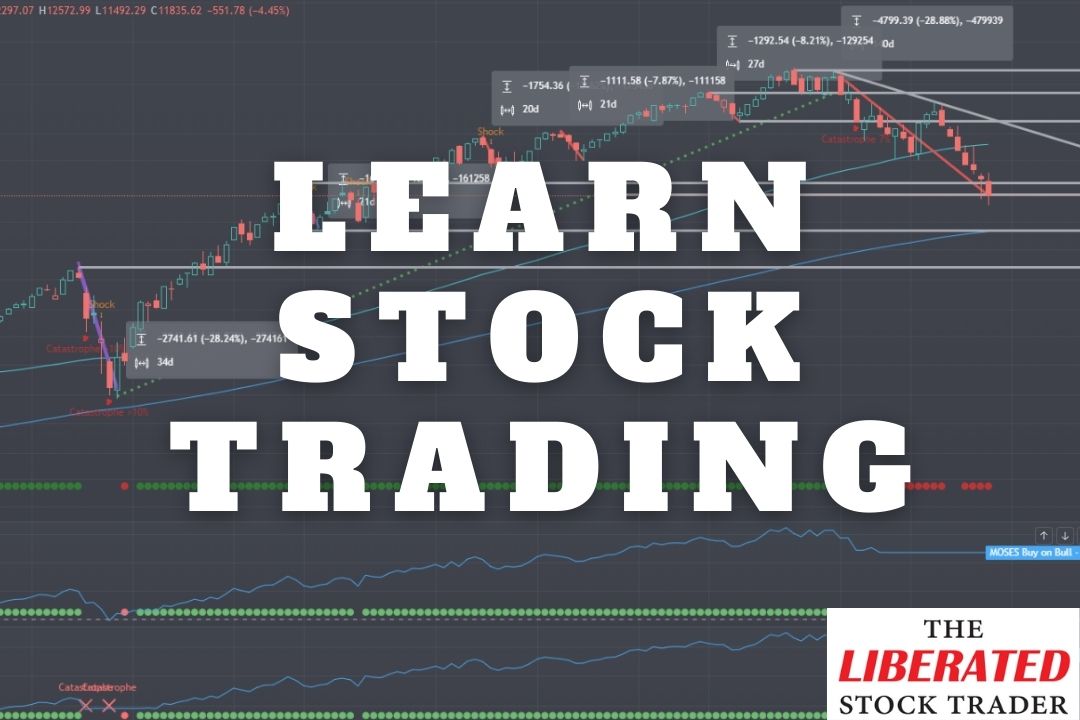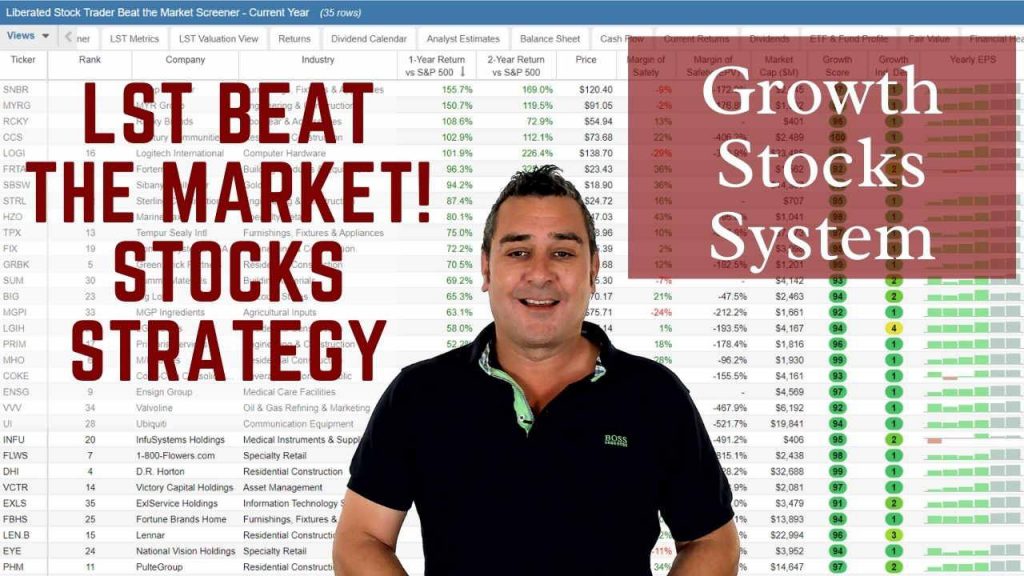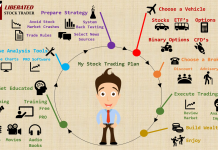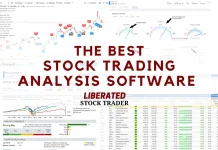Using stock leverage involves trading with borrowed capital in a margin account. Leveraged stocks, ETFs, or stock options are a double-edged sword.
☆ Research You Can Trust ☆
My analysis, research, and testing stems from 25 years of trading experience and my Financial Technician Certification with the International Federation of Technical Analysts.
Leverage has the potential to magnify your gains and wipe out your capital.
Leverage can be a powerful tool in stock trading, but it comes with a high level of risk. It allows you to control a larger amount of assets than what you actually have available in your account. This means that even a small change in the value of the asset can result in significant gains or losses.
In this article, I will answer the most common questions about leveraged stocks, how to use leverage in trading, and the risks involved.

What is stock leverage?
Stock leverage is an investment strategy that allows investors to control more shares than they can afford. This is accomplished by borrowing money from the broker and using it to buy more stocks. Leveraged investments can produce higher returns but also come with higher risks. Investors should carefully consider their goals before leveraging any stock position.
What is a leveraged stock?
A leveraged stock is a stock that has been bought with the use of debt. When you buy a leveraged stock, you use borrowed money to purchase it. Leverage can magnify your profits if the stock goes up in price, but it can also magnify your losses if it goes down.
What does leverage mean in stocks?
Leverage refers to using debt to amplify an investment’s returns or losses. When you use leverage to invest in stocks, you borrow money to buy shares. Leverage can lead to greater profits if the stock price rises, but it also means that you will lose more money if not all your money if the stock price falls.
What does it mean when a stock is leveraged?
A leveraged stock is a stock that has been purchased with the use of leverage or borrowed money. Leverage is a financial tool that can increase the potential return on an investment. When used in the stock market, investors can buy more shares than they could otherwise afford.
How do leveraged stocks work?
When you buy a leveraged stock, you use borrowed money to purchase it. This can magnify your profits if the stock goes up in price, but it can also magnify your losses if it goes down.
How do you buy stocks on leverage?
Leveraging stock means you will need to borrow money from a brokerage firm or another lender. This can be done by taking out a margin loan or using a margin account. Leverage can be provided by borrowing money from a broker or financial institution, using margin accounts or derivatives such as options contracts.
The level of leverage available will depend on the rules and regulations set by the broker or exchange. In general, the higher the level of leverage, the riskier the investment.
How do you trade stocks with leverage?
When trading stocks with leverage, there are two important things to remember: First, always use stop losses to protect yourself against large losses. Second, ensure you understand the risks of using leverage before you trade any stocks. If you understand and are comfortable with these risks, trading stocks with leverage can greatly increase your profit potential.
You want to be a successful stock investor but don’t know where to start.
Learning stock market investing on your own can be overwhelming. There’s so much information out there, and it’s hard to know what’s true and what’s not.
Liberated Stock Trader Pro Investing Course
Our pro investing classes are the perfect way to learn stock investing. You will learn everything you need to know about financial analysis, charts, stock screening, and portfolio building so you can start building wealth today.
★ 16 Hours of Video Lessons + eBook ★
★ Complete Financial Analysis Lessons ★
★ 6 Proven Investing Strategies ★
★ Professional Grade Stock Chart Analysis Classes ★
How much leverage is allowed for US stocks?
Currently, the US stock market retail traders can use 2:1 leverage or a 50% margin. This means you can borrow up to 50% of the value of the stock you purchase. However, this margin can vary depending on your broker; some are more conservative and restrictive.
How much can you leverage stocks?
How much leverage you can use when buying stocks will depend on the brokerage firm or online platform. Some firms will allow you to borrow up to 50% of the purchase price of the stock, while others may only allow you to borrow up to 20%. It is important to know your broker’s margin requirements before you trade any stocks.
How leveraged is the stock market?
According to FINRA’s latest report, the average amount of leveraged capital in use is roughly $800 billion, compared to the amount of cash in trading accounts of $200 billion. This means that $4 of every $1 invested in the stock market uses debt.
The amount of leverage in the stock market varies depending on the stocks being traded. For example, penny stocks are often more heavily leveraged than blue chip stocks. This is because penny stocks are generally more volatile and have a higher risk of loss.
How do you leverage stock investments?
There are several different ways to leverage your stock investments. One way is to use margin accounts, which allow you to borrow money from your broker to purchase stocks. Another way is to use options contracts, which give you the right, but not the obligation, to buy or sell a stock at a certain price. You can use options to leverage your investments by taking on more risk for the potential of higher rewards.
Our original trading research is powered by TrendSpider. As a certified market analyst, I use its state-of-the-art AI automation to recognize and test chart patterns and indicators for reliability and profitability.
✔ AI-Powered Automated Chart Analysis: Turns data into tradable insights.
✔ Point-and-Click Backtesting: Tests any indicator, pattern, or strategy in seconds.
✔ Never Miss an Opportunity: Turn backtested strategies into auto-trading bots.
Don't guess if your trading strategy works; know it with TrendSpider.
Example: Using Leverage in Stocks
Alice is interested in buying stocks but doesn’t have enough money to buy the number of shares she wants. She decides to use leverage to buy more shares. By borrowing money from her broker, she can purchase twice as many shares as possible using her own money. Alice will profit from the extra shares she purchased with borrowed money if the stock price increases. However, if the stock price falls, Alice will lose more money than if she had only bought shares with her own money.
Example: A Winning Leveraged Trade
Assume you have $10,000 to invest in stocks. You could buy 100 shares of a stock at $100 per share. However, if you borrow an additional $10,000 from your broker and use it to buy 200 shares of the same stock, your total investment would be $20,000. If the stock price goes up by 10%, your investment would be worth $22,000 ($20,000 x 10% = $2,000). As you only invested $10,000 of your own money, your profit would be 20% ($2,000 on $10,000 invested).
Example: A Losing Leveraged Trade
In the same scenario as above, If the stock price falls by 10%, your investment would be worth $18,000 (200 shares = $20,000 x -10% = -$2,000), but after paying back the loan of $10,000, you would be left with a loss of 20% even though the stock price only dropped 10%.
Additionally, If the stock price falls by 20%, your investment would be worth $16,000 (200 shares = $20,000 x -20% = -$4,000), and you would have a total loss of 40% on your investment.
3 Reasons to Avoid Stock Leverage
1. High Risk – Leveraged stock trading carries a very high risk. Even if you are an experienced trader, you could suffer large losses in a short amount of time.
2. Higher Losses – If the stock price does not move as expected, your losses can be magnified due to leverage.
3. Missed Opportunities – When investing with leverage, money used to pay for the loan is unavailable for other investments. This means you could miss out on potential profits from other investments.
In addition to financial risk, leveraged investments require a high degree of sophistication and knowledge to understand the implications of the various strategies. These strategies can also have significant tax implications. Before investing with leverage, you must be aware of the risks involved and take steps to ensure you are fully informed and comfortable with your decisions.
Ever Dreamed of Beating the Stock Market
Most people think that they can't beat the market, and stock picking is a game only Wall Street insiders can win. This simply isn't true. With the right strategy, anyone can beat the market.

The LST Beat the Market Growth Stock Strategy is a proven system that has outperformed the S&P500 in 8 of the last 9 years. We provide all of the research and data needed to make informed decisions, so you no longer have to spend hours trying to find good stocks yourself.
The LST Beat the Market System Selects 35 Growth Stocks and Averages a 25.6% Annual Return
★ 35 Stocks That Already Beat The Market ★
★ Buy The Stocks & Hold For 12 Months - Then Rotate ★
★ Fully Documented Performance Track Record ★
★ Full Strategy Videos & eBook ★
Take The Pain Out Of Stock Selection With a Proven Strategy
Can you lose all your money on a leveraged trade?
Yes, losing all of your money on a leveraged trade is possible. Leverage amplifies gains and losses, so the potential for loss can be much greater than when investing without leverage.
If you make a stock trade using 50% leverage and the stock price falls 50%, you will lose all your invested capital after paying back the loan.
What happens if your stock trade falls below your invested capital?
If the stock you purchased falls 50% on a 2 to 1 leveraged trade, you will receive a margin call from your broker, who might automatically sell the stock to recoup their money.
If you borrow money to buy stocks, and the stock price falls, you will have to pay back the loan plus interest, even if you sell the stock at a loss. So if the stock price falls a lot, you could lose all your money.
Conclusion
When used wisely, leverage can be a powerful tool to help investors reach their financial goals. However, it is important to remember that leveraged stocks come with a higher level of risk and should only be purchased by investors comfortable with that risk.
Leveraging stocks or trading on margin can greatly increase your profit potential, but it is important to understand the serious risks involved before you trade any stocks. Make sure you use stop losses and only trade with money you can afford to lose.




















